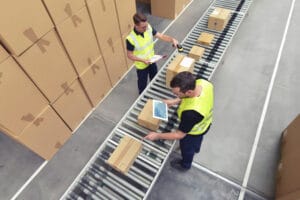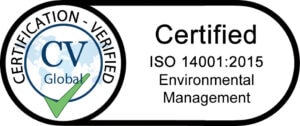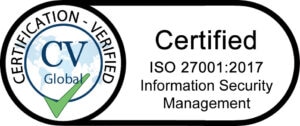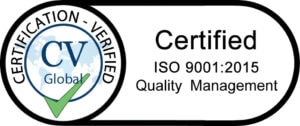Digital Transformation in the construction industry 2021
Home / Blog / Future-proofing / Digital transformation in the construction industry 2021
Introduction
From a dramatic rise in home DIY to the shortages of material supplies globally; from timber, cement, plastics and plaster boarding, the pandemic has massively interrupted and disrupted the construction sector in 2021 and for the future.
Technology and data visibility are key enablers for change in construction, and the forecasted growth for 2022 is only going to amplify any technology gaps impacting business operations and ultimately customer satisfaction.
The Construction Product Association data forecasted 12.9% growth in construction output in 2021, driven by rising activity in the infrastructure and industrial sectors. This is also driven by repair, maintenance, and improvements (RM&I). Looking ahead to 2022, the CPA is predicting further growth of 5.2% which would see output grow beyond 2019’s pre-pandemic level. All great news provided the sector is ready for this growth and can scale their operations to meet demand.
Uncertainties of Imported Product Supply
Imports suffered during the first half of 2020. The Office for National Statistics (ONS) states imports, and exports fell by £16.7 billion (31.8%) and £14.9 billion (18.5%) respectively in Quarter 2 (Apr to June) 2020. The collective 46% decline in imports and exports has been largely due to global lockdowns and travel restrictions impacting the movements of goods and services.
Brexit combined with the global pandemic and the issues highlighted above, has accelerated the discussions around supply chain convergence, and for the first time businesses are planning “the convergence in the roles of inventory optimisation, demand planning, transportation management, and supply planning that goes beyond data integration. It’s a cross-functional interaction that creates business value by injecting information and analytics from one application into the others.” Supply Chain Times.
In the latest SOTI report, Mobilising the Delivery Workforce: State of Mobility in T&L, 72% of the 550 IT Managers interviewed, believe their systems and technology are not integrated. In addition, 45% claim that updated information is not shared or that staff manually update multiple systems. So there is still a lot of technical system integration to do in the sector.
“Global logistics firms are deploying advanced automated workflows to enable broader collaboration in the supply chain. Communication up and down the chain, to capture data, and provide valid data reporting with automated workflows, all enable greater operational efficiencies.” Sarah Edge, Director of Sales, UK, SOTI.
The Rise of the Home Office and DIY
A dramatic increase in remote working has demonstrated the need for reliant technology and effective communication tools for organisations, their employees and consumers.
“Track and trace methods for goods being delivered is becoming increasingly important as customers rely on home delivery services and demand real-time communication and status updates. This in turn is putting huge pressures on transportation and delivery services across all sectors, as they pivot to domestic demand alongside central depots and retail stores.” David Glover, Chairman Symec UK.
In the latest SOTI Report: 71% of IT managers surveyed felt that a mobile-first piece of technology would be the key to the last mile delivery. However, the demand for visibility of product and shipment statuses in the supply chain also places demand on electronic proof of delivery. Often required is proof of delivery to a safe place, including a photo and even a text to confirm a signature is now the norm. So, the whole solution needs to be integrated outside of the supply chain and into the organisation’s customer services team for example.
80% of respondents claim their organisation plans to invest considerably in new technology such as mobile devices, wearables, and IoT devices and solutions in the next 18 months. This figure rose to 82% in North America and 81% across Europe.
One example of this DIY phenomenon is Kingfisher, the owner of B&Q and Screwfix, whose digital business has attracted 10 million new online customers over past year. The group, which operates over 1,300 B&Q and Screwfix stores in the UK and Ireland as well as outlets in France, Poland, Spain and Portugal, said sales climbed 7.2% to £12.3bn in the year to 31 January. Kingfisher even references a new era of social media DIY-ers driving demand for their products and further requiring digitisation to their operations.
Using Technology to Build Trust in Supplier Relationships
Real Time Transportation Visibility (RTTV) platforms help keep supply chains moving. Customer satisfaction levels are improved by notifications of delivery statuses in real time. The online world has made every sector and every market smaller, also making it easier for customers to compare equal products and place their order based on best service reviews or the fastest available delivery times. With less time spent internally chasing colleagues for updates and feedback, your employees can spend more time on value added services and tasks, knowing the backend processes are integrated and workflows are automated. Accurate ETAs allow greater stock management and operational capacities to be maximised.
“All conversations around technology in this space start with the identification and alignment of the issues and desired outcomes. From reducing uncertainty of stock, to improved demand forecasting and increased customer satisfaction. The alignment of a business’s critical functions and their operational objectives is key.” Jack Hughes, Sales Director, Symec.
So how are things changing today, and what improvements are being made?
From warehouse operatives scanning barcodes using handheld computers monitoring stock levels, integrated with order fulfilment teams and stock inventory systems, to online orders with automated email confirmations via customer services teams and notifications of delivery dates aligned to logistics and delivery time frames and availability for next day slots. These workflows are complex and full automation end to end is required to compete in an ever-growing digital world to meet customer expectations.
“Wearables have made it to the warehouse, and we are seeing an increased demand in operational services and efficiencies. This is about complementing and enhancing existing workflows and the use of wearables and IoT to get business critical data.” Sarah Edge, Director of Sales, UK, SOTI.
David Glover from Symec states “Investments in wearables will increase during 2021, outside of the warehouse into the entire logistics and transportation space and right across the supply chain, as organisations nudge their operations into a more digital future.”
Improving efficiencies and transforming operations
Contact us today to find out what a Symec and SOTI partnership can do for you.- How do you secure devices and apps?
- How do you keep up with the demand for apps?
- How do you gain visibility?
- How do you support workers and devices?
Speak to an expert today. Request a demo.
BOOK A SOTI one DEMO
Related articles

Mobilising the Delivery Workforce: State of Mobility in Transportation and Logistics 2021 Report
Mobilising the Delivery Workforce: State of Mobility in Transportation and Logistics 2021 Report – Read about how mobile technology can modernise T&L operations.

SOTI ONE Platform
SOTI provides a complete mobile and IoT lifecycle management suite of solutions that delivers total visibility and control over your mobile assets. The SOTI ONE Platform helps you eliminate downtime, build apps faster, and manage all mobile and IoT devices in one place.

Embracing change for future profitability
The tech world never stands still. But it’s how firms deal with this fast-moving environment that sets the best-performing companies apart from the also-rans.












